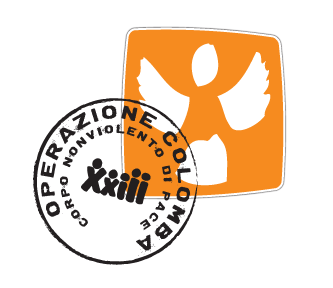Az Zawiya village - Land grabbing
“Talla (look)! Can you see the ruins over there?” Amir asks. “That’s where I was born and grew up. All that land belongs to my family”.
The wind blows hard almost to return the pride of those words.
From the hill Amir looks that land, now so far from him. A military jeep patrols the road on the other side of the fence. Voices are heard in Hebrew, and the sound of machinery which are working in the quarry. Amir lets slip his usual contagious laugh. “When I was a child, I always got closer to the quarry to play”.
The silence returns. Amir can’t go back on that land.
Now the grey buildings of Israeli cities are there, and not so far Tel Aviv.
For someone, a wall to protect from a world considered hostile but that people refuse to see and to know; for others, a cage which is becoming narrower and oppressive.
Now the wall separates and divides a land that before stretched free until the sea.
The wall imposes itself vehemently, following a line deliberately not regular. Delineates spaces, not only physical, but mental.
An “outside” and an “inside” where it’s easy to get lost.
Az Zawiya is a Palestinian city in the Salfit Governorate, in the north-west of the West Bank. With the Oslo agreements, nearly the 9,5% of the city is located in Area B, while the 90,5% is considered Area C. Therefore, in most of the city’s territory, land management as much as building are prohibited if not through obtaining permissions and authorizations from the Israeli Civil Administration.
Over the years, the community of Az Zawiya has suffered the confiscation of large quantities of land. On the confiscated lands, outposts and settlements are born, as the settlement of Elkana and the outpost of Magen Dan.
The Separation Wall, built on occupied territory over the armistice line pre-1967, has had a devastating impact on residents. The barrier has stolen 36% of the total land of the city, and divides the village and the legitimate owners from their land, imprisoned inside the Seam Zone. Most of the isolated lands are agricultural areas, now military closed to Palestinians, whose access is permitted through special permits and agricultural checkpoints in particular periods of the year.
Inside the private land of the Palestinian residents, expropriated by the wall and the occupation, is located the quarry of Nahal Raba. The quarry is owned and managed by Hanson Israel, branch of the German multinational HeidelbergCement. As reported by some human rights organizations, as Al Haq, the company sells materials extracted from the quarry to the Israeli settlements.


 OPERAZIONE COLOMBA
OPERAZIONE COLOMBA
